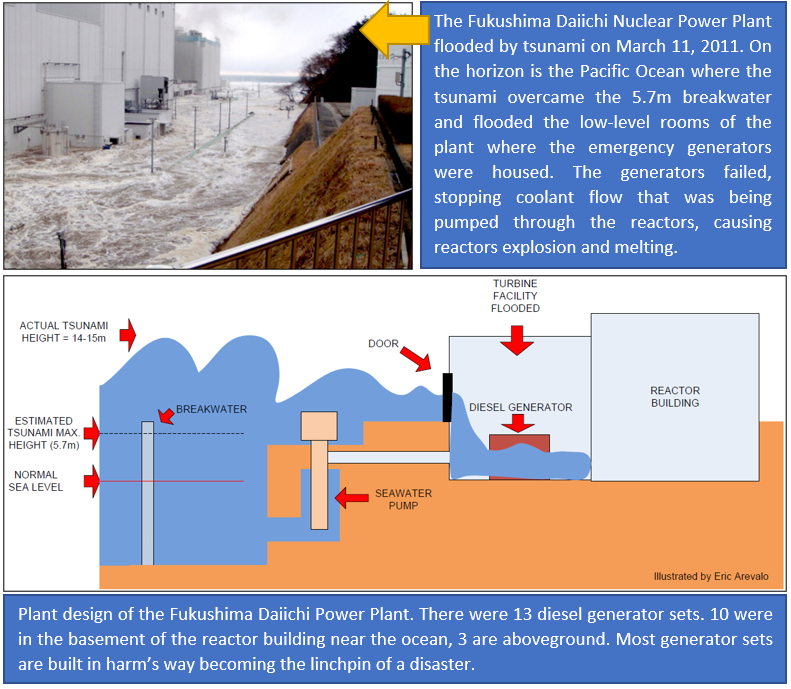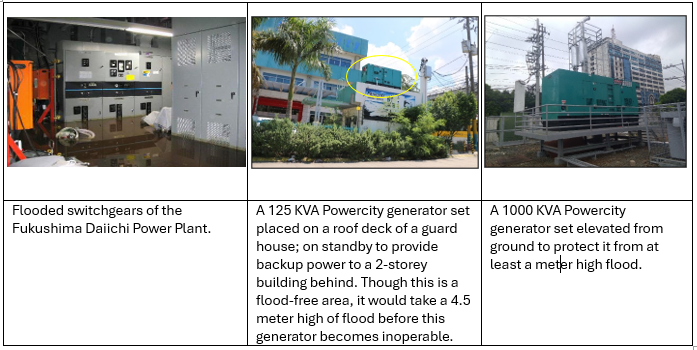Trends in Generator Location
Background
Diesel generators are used in nuclear power plants if a nuclear plant loses power from the electric grid. Perhaps one of the most significant industrial design errors in locating a generator set was realized in the Fukushima Daiichi Nuclear Power Plant disaster in March 2011 after a magnitude 9.0 earthquake 70 kilometers east of the Oshika Peninsula triggered a tsunami that overcame the breakwaters expected to protect the power plant. The tsunami sent 14 to 15-meter-high waves overcoming the 5.7-meter-high breakwater and flooding the low-level rooms of the Fukushima Daiichi Power Plant where the emergency generators were housed. The generators failed, stopping the coolant flow that was being pumped through the reactors, causing reactors to explode and melt.

Lessons Learned
The Asia Pacific Research Center of Stanford University in California pointed out three variables crucial at the early stages of the crisis at the Fukushima disaster, namely: plant elevation, breakwater or sea wall elevation, and the location of backup generators. Higher elevations for these variables, or waterproofing protection of backup generators, could have mitigated or prevented the disaster.
Standards Recommendation
Paragraph 7.2.4 of the NFPA 110 – Standards for Emergency and Standby Power Systems, 2016 edition, recommends that emergency power supply systems (EPSS) shall be designed and located to minimize damage from flooding, including that caused by the following: (1) flooding resulting from fire-fighting, (2) sewer water backup, and (3) other disasters or occurrences. This paragraph is further explained that EPSSs should be located above known previous flooding elevations where possible.

Advantages and Disadvantages
Some owners of generator sets prefer roof deck locations. There are advantages and disadvantages though.
Advantages:
1. The generator avoids flooding during adverse weather.
2. Secured. The roof is above street level away from vandalism and theft.
3. In densely populated cities sometimes a roof deck would be the only available space to utilize.
4. Better ventilation. Reduces ventilation ducts.
5. Eliminates or only short exhaust pipes.
6. Increased isolation distance from noise produced by the generator.
Disadvantages:
1. The roof deck structure may need to be reinforced to bear the weight of the generator set.
2. Would require a crane to lift the generator and place it on the roof deck.
3. Manually, would require a dismantling of the generator to deliver and place on the roof deck.
4. Could require longer feeder cables.
5. Fuel storage may also be required to be placed on the roof deck to reduce fuel pipe length.
6. Could complicate fuel delivery.
7. Could impose difficulty in servicing the generator set.
8. Higher exposure to lightning strikes or surges typically if placed outdoors.